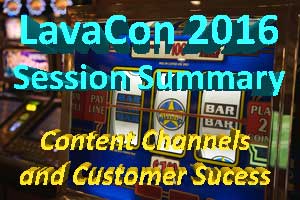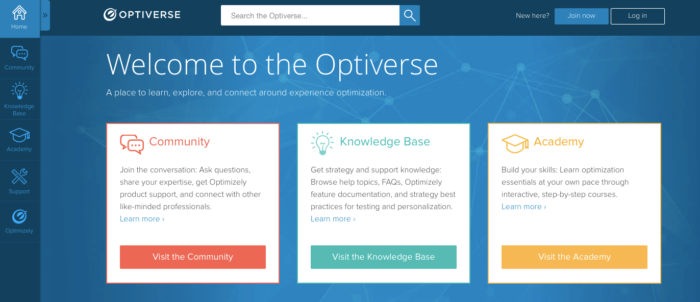Optimizely’s integrated approach to managing content channels reduces costs and creates customer success
Speakers: Adam Avramescu, Yeesheen Yang, Optimizely
Session recording: TBD
 I admit when I first selected this session from the LavaCon 2016 program, I anticipated some stats on reducing customer support costs, and a case study on a set of tools. What I got was a look at how a young company is living my dream—truly integrated customer support across content channels. This is what customer success looks like at Optimizely.
I admit when I first selected this session from the LavaCon 2016 program, I anticipated some stats on reducing customer support costs, and a case study on a set of tools. What I got was a look at how a young company is living my dream—truly integrated customer support across content channels. This is what customer success looks like at Optimizely.
Optimizely bills itself as “the world’s leading experimentation platform, enabling businesses to deliver continuous experimentation and personalization across websites, mobile apps and connected devices.” The fact that experimentation is built into the company’s DNA may partially explain their willingness to look at the customer experience from all of the traditional angles, and build it with a focus on personalization to create customer success.
Adam and Yeesheen introduced themselves and Optimizely as citizens of the wild, wild west of Startup Land. That gave them freedom from preconceived notions and challenges related to legacy content—imagine living without PDFs as a required documentation output! Optimizely works on an ongoing release schedule, rather than periodic, so one of their first challenges as “customer education” was to move quickly to react to new releases. They view their mission simply as “documentation as customer success,” with the emphasis on customer success. Yeesheen noted that “the job of Customer Success is also to learn what customers want to accomplish and help Product [team] develop software that enables customers to do a thing.”
 The Optiverse, Optimizely’s integrated customer education portal, is developed with four key educational values in mind:
The Optiverse, Optimizely’s integrated customer education portal, is developed with four key educational values in mind:
- Learn through interaction
- Deliver 80/20 customer value (20% of time expended produces 80% of results)
- Test, learn, iterate
- Start with Why: Industry education then product education.
In addition the customer education team develops to support three phases of the customer lifecycle that they describe as:
- Support and scale: provide basic how-to’s, troubleshoot problems, and introduce key concepts
- Sequenced learning: master the product in a sequential way/
- Social learning: share knowledge with peers
The Optiverse comprises three areas—the Knowledge Base, the Academy, and the Community—all accessible within one interface, with each having each gone through iterations to reach their current version. Adam and Yeesheen willingly shared what they looked for and why they chose the platforms they now use, including the importance of being able to interface with each other and to customize the look to support their brand. They also discussed where they’re planning to take customer education next, rather than resting on some pretty impressive laurels.
Their team creates structured content and delivers in a form appropriate to the channel. They’ve built the Optiverse for customers first, and sometimes at the expense of internal team efficiencies in order to solve customer problems at a “human level.” They note that the vast majority of customers arrive at the knowledge base first, so it is shouldering the burden of linking out to the other channels. As a result, the content in the KB is more vetted than the content shared to the community. I found the approach of using the community to support industry education and their thought leadership objectives intriguing. So many of the online communities I encounter have little to no monitoring by technical support or product teams, and this kind of interaction appears to produce tremendous benefits for both the customers and the company. They go beyond traditional badge programs to incentivize community contributors with t-shirts, emblazoned with “We are all educators.”
One other area the team works on is “in-product education” which requires a focus on creating micro-copy rather than traditional help. It’s the ultimate in contextual help because it guides rather than defines. The framework appears pretty seamless, which usually means tremendous effort and executive support were required. Their metrics demonstrate that “documentation,” or rather “customer education,” is a differentiator in Optimizely’s sales cycle.
For the record, here are Optimizely’s platform tool choices:
- Knowledge base: Mindtouch
- Community: Lithium
- Academy: Docebo / GoToTraining
- In-product education: Pendo